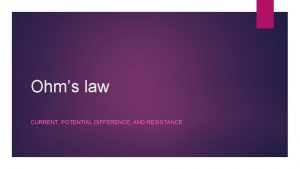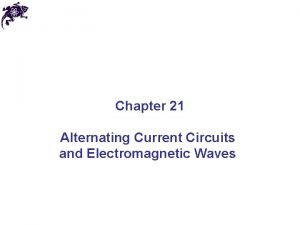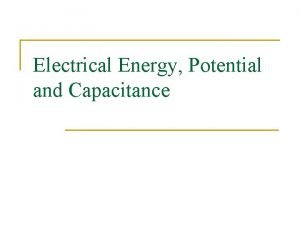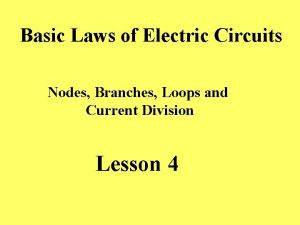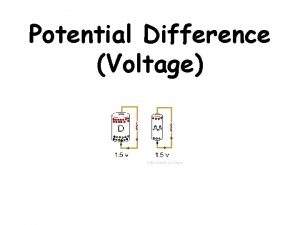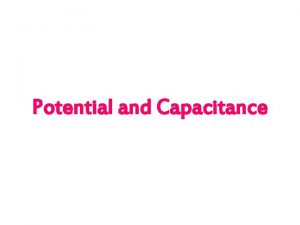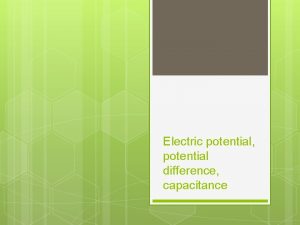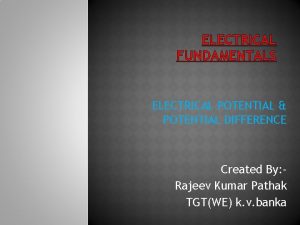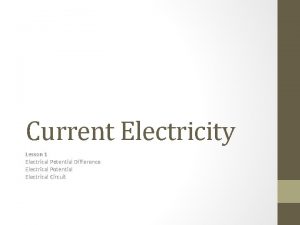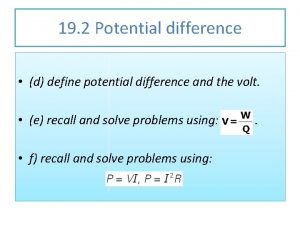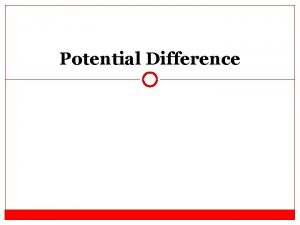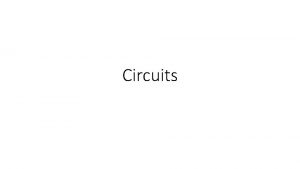Electrical Quantities Electrical Current Electrical Circuits Potential Difference













- Slides: 13

Electrical Quantities Electrical Current Electrical Circuits Potential Difference Meters

Video on Electric Current Questions • What is current? • What unit is used for current? • What are the two types of current? • What is a circuit? • What components are necessary to make a complete circuit?

Current • Rate of flow of charge • Amount of charge flowing per unit time • Equation Amount of charge Current = Time taken Q I= t • Measured in amperes, A

Types of Current • Direct current – Flow of charge is in one direction

Types of Current • Alternating Current – Flow of current changes or reverses in direction

Circuit and Symbols • A path where electrons can flow • Three important parts – Source of energy • Battery • Outlet – Conducting Path • Electrical wires – Resistor • lamp

More on Circuits • Closed circuit – Complete path • Open circuit – There is a break in the conducting path • Open switch • Broken wire • Busted bulb • Short circuit – No resistor in the circuit – Very high current

Question How fast do electrons move? (You pushed the switch button and the light turns on in a short amount of time. )

Answer: 1 -1 cms !

Voltage • Energy per unit of charge • Equation – Voltage = Energy Charge • Unit: Volt, V • “driving force” that pushes charges around the circuit • Two basic types – emf (electromotive force) – pd (potential difference)!!!

Question What happens to the electrical energy supplied in the circuit?

Measuring Current: Ammeter • Connected in series with the component – Break and connect

Measuring Voltage: Voltmeter • Connected parallel to the component
 Angular acceleration
Angular acceleration Define electric potential and potential difference.
Define electric potential and potential difference. Electrical potential
Electrical potential Sales potential vs market potential
Sales potential vs market potential Electric potential and potential difference
Electric potential and potential difference Potential energy due to a point charge
Potential energy due to a point charge Chapter 25 electric potential
Chapter 25 electric potential Current potential difference and resistance
Current potential difference and resistance Advantages of parallel circuit over series circuit
Advantages of parallel circuit over series circuit Ohm's law and electric power worksheet answers
Ohm's law and electric power worksheet answers Alternating current circuits and electromagnetic waves
Alternating current circuits and electromagnetic waves Difference between potential difference and emf
Difference between potential difference and emf Two types of circuits
Two types of circuits What are nodes in circuits
What are nodes in circuits







